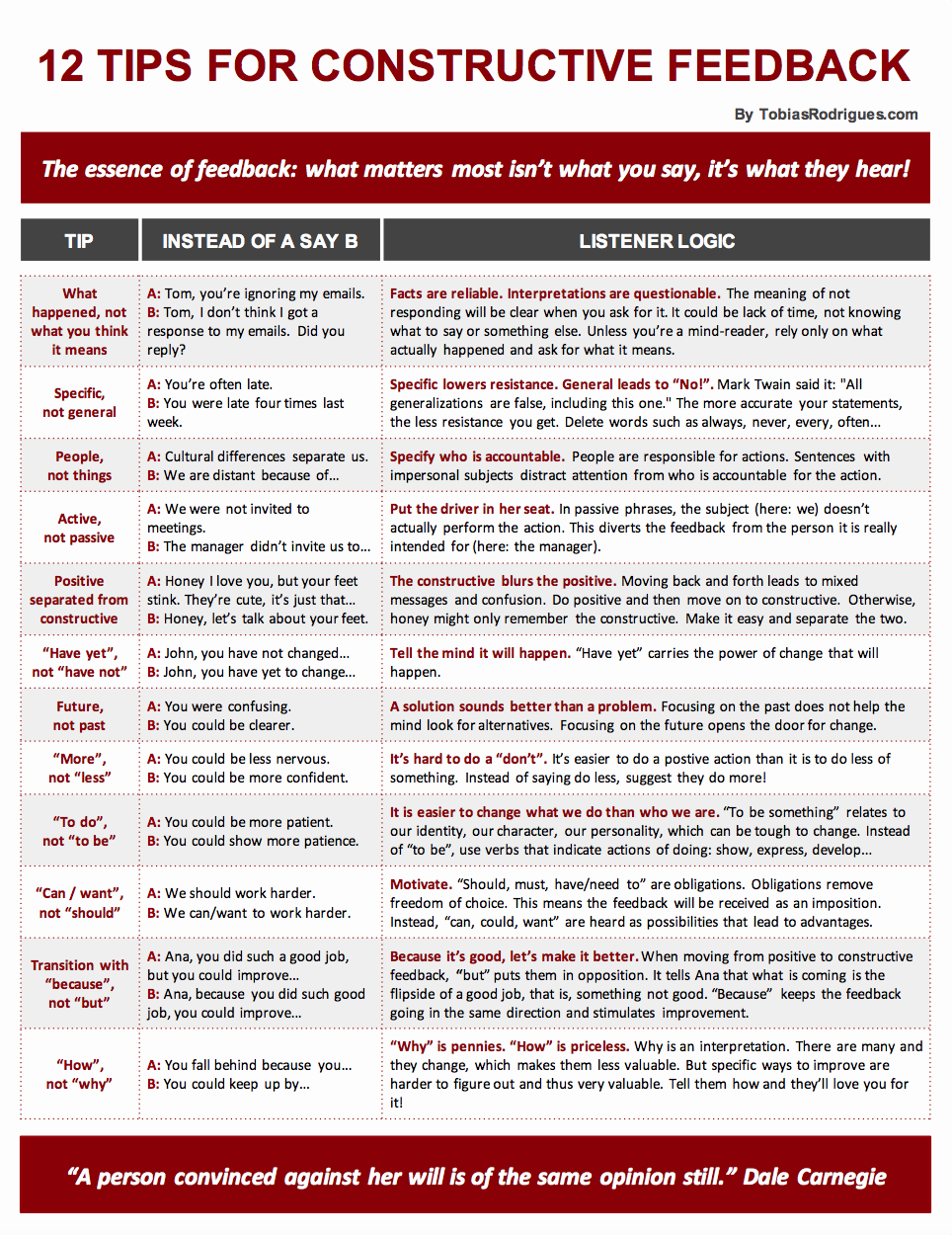Tag: Leadership
12 Tips For Constructive Feedback
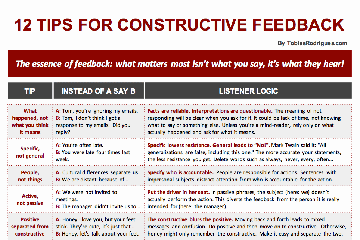
Whether a direct report, a manager, a colleague, a friend or a partner, giving constructive feedback is a crucial element of our relationships.
.
How you give feedback
determines how it is received.
I moderate constructive feedback sessions for teams and their leaders, and some patterns prove to be more effective than others. Here’s a set of keys that unlock the doors for constructive feedback to be well received.
Download and discuss them with those you give feedback to.
What matters most
isn’t what you say, it’s what they hear.
So by all means, I’d love to hear your constructive feedback.
Is Your Small Talk SMART?
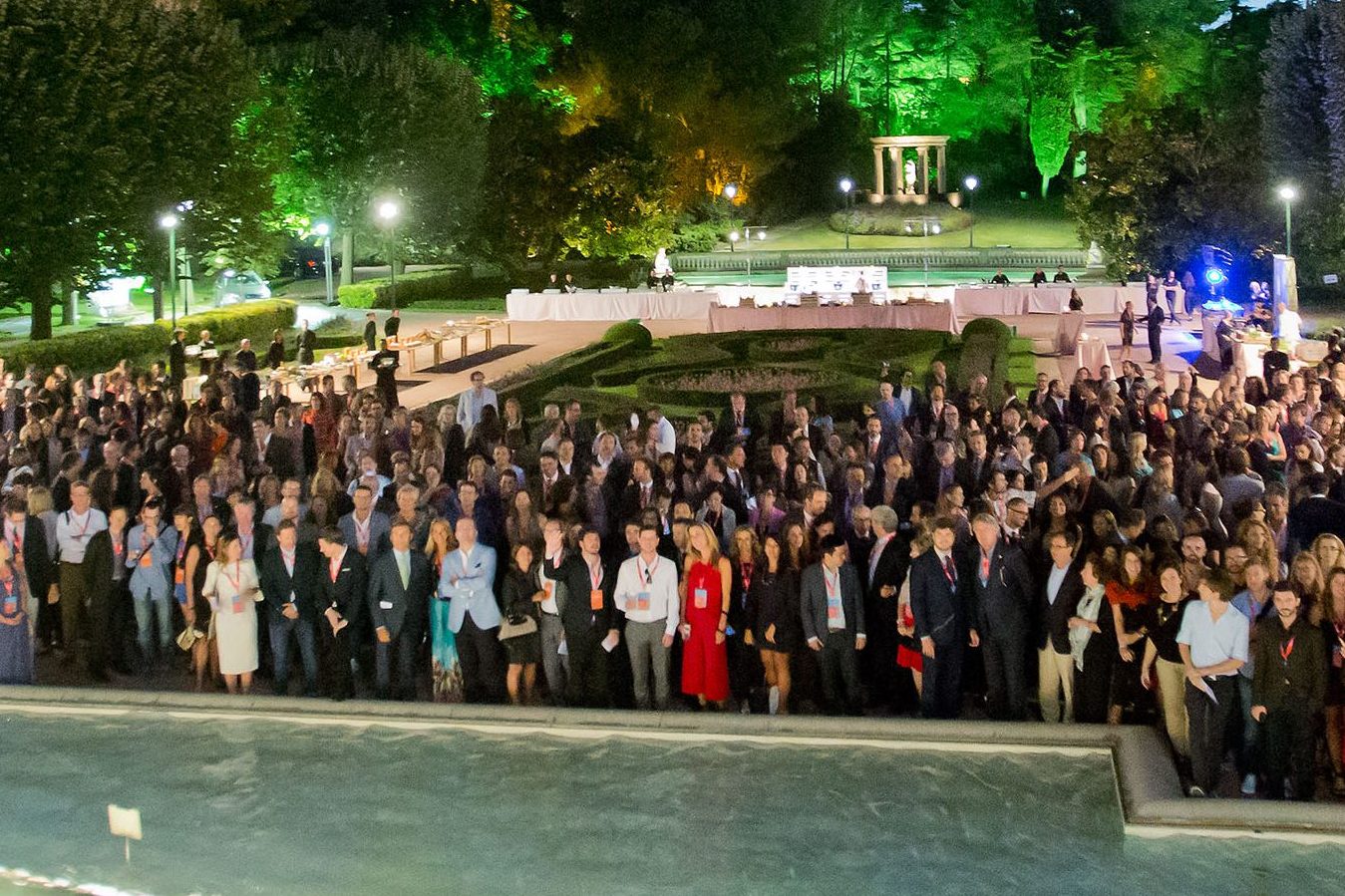
Last week I attended the 3rd Hola Barcelona Cocktail, an event organized by Barcelona Global to welcome new international professionals arriving in Barcelona.
The purpose is to strengthen the relationship between Barcelonians by birth and Barcelonians by choice. It was lovely. I met wonderful people and conversations were great, which got me thinking: What makes small talk interesting?
The topic is important, but not everything — you can have a pointless conversation about a great topic! The key is HOW we talk.
Make small talk SMART:
Supportive, Meaningful, Authentic, Refreshing, and Tasteful
But, is small talk really that important? After all, it’s just chit-chat, right? Or not? Is there a connection between small talk and other areas of our life?
As a team effectiveness trainer, I often join teams for social events after the training. And for 4 years now I’ve been looking for a connection between the quality of small talk and people’s professional and personal fulfillment. I’ve found one:
Effective leaders and teams engage in smart small talk.
There’s a chance I’m seeing what I want to see, which begs the question: Is there scientific evidence to support my findings? I did some digging and there is.
For instance, Judith E. Glaser has coined the term “Conversational Intelligence” or “C-IQ”, a person’s ability to connect with others through conversations and to jointly think innovatively, empathetically, creatively and strategically.
Judith and the people at Benchmark Communications Inc. have studied the neurochemistry of conversations and shown that managers who “talk smart” are more successful than those who don’t.
So small talk is not just a chit-chat. Smart small talk does make a difference!
Here’s an experiment to spice up conversations at your next event:
- Step One: Identify interesting angles to the conversation, relevant aspects or perspectives that are being overlooked.
- Step Two: Ask a politely provocative question. This will accomplish two things: you’ll get people’s attention and you’ll spark openings for more meaningful dialogue.
- Step Three: Pick a positive message. This is important because you want to contribute to the conversation in meaningful way.
Easy to remember: Angle + Question + Message.
What do you do to keep the small talk smart?
The Trust Story

This meant he didn’t really trust anyone.
Except for one person: his special friend. It took him more than 10 years to do so. Before trusting him, he assessed the events that indicated his special friend was worthy of trust:
– When I wanted to go for a drink, my friend was always ready.
– When I renovated my apartment, my friend booked all his weekends until it was done.
– Even when I considered a career change, my friend was there to carefully listen and give good advice.
– And when my mom died, my friend never once left my side.
For the first time the man felt he was ready to trust.
The next day, his special friend died.
For the remainder of his days, the man wondered if his friend had also trusted him. And when they met in the afterlife, the first thing the man did was ask his friend if he had been trustworthy, and if so, when had he decided to trust him.
Staring at the man with a look of confusion on his face, the special friend said:
Of course you’re my trusted friend! I decided to trust you the day we met. And ever since you’ve never betrayed my trust:
– Whenever you needed a favor, you trusted me to ask for help.
– When you wanted to go for a drink, it was me who you choose to confide your secrets.
– When you renovated your apartment, you allowed me and no other to enter the privacy of your home to rebuild it.
– Even that time — remember? — when you were considering a career change, again it was me who you turned to for advice.
– And when your mom passed, I was the only one you accepted at your side.
Your actions have taught me the meaning of trust!
The man stood there in shock, thinking:
You never fully know what people are capable of. By this token, you’ll never really know when you can trust someone.
Credits: I first heard of a credit for trust from my dear friend Florian Mueck.
Two Signs Of Good Advice
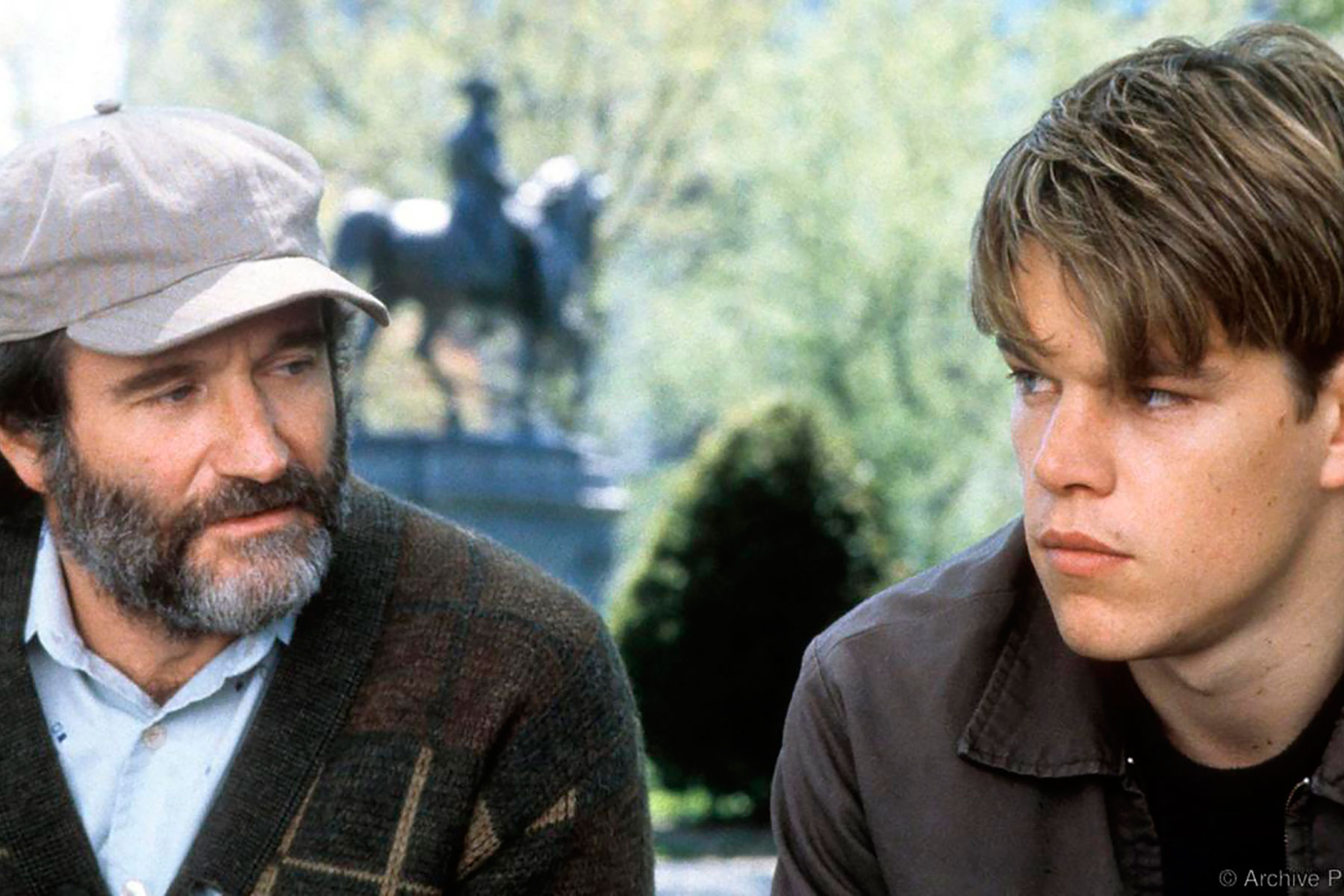
The other day my friend and colleague, Sebastián Lora, visited Barcelona and we met for a stimulating Gin&Tonic. He asked for my opinion about a workshop he’s preparing for Toastmasters. I gave one at last year’s District Conference, so I shared my experience.
Afterward, I wondered if I’d given useful advice. I began to reflect on criteria to recognize good advice. Family, friends, colleagues and professors whose counsel I deeply value came to mind. What do they have in common? Two things stood out:
Questions instead of recommendations
are a sign of good advice.
1. The people who give me good advice never say: “you should do this”. They have in common that they ask questions that help me discover what to do. This is a sign of wisdom.
They know no two situations are the same, that their experience is always their experience. And if they have a pretty good idea about what to do, even so they use questions to help me see the way, not just the finish line.
Tell me how – now that’s priceless!
2. Good advice consists of “how” not “what”. The people who’ve helped me improve and grow are those who’ve suggested specific alternatives.
General advice is easy to get — and give! — because it requires no real effort: do this, do that, be this, be that, blah, blah, blah! But find someone who tells you HOW you can do it, who suggests SPECIFIC ways and you’ve found a true treasure!
The world is full of people with a message.
There are few with a method.
You know you’ve found a good adviser when you hear questions that help you decide rather than recommendations that tell you what to do.
You know you’ve found a good adviser when you hear specific suggestions to improve instead of general guidelines to follow.
Did I live up to these criteria with the advice I gave to Sebastián? Only he can say. 🙂 I do remember asking questions and giving a few tips. But there’s no doubt: next time I’ll do better following these two principles!
How do you recognize good advice?
The Connection Matrix – Part One
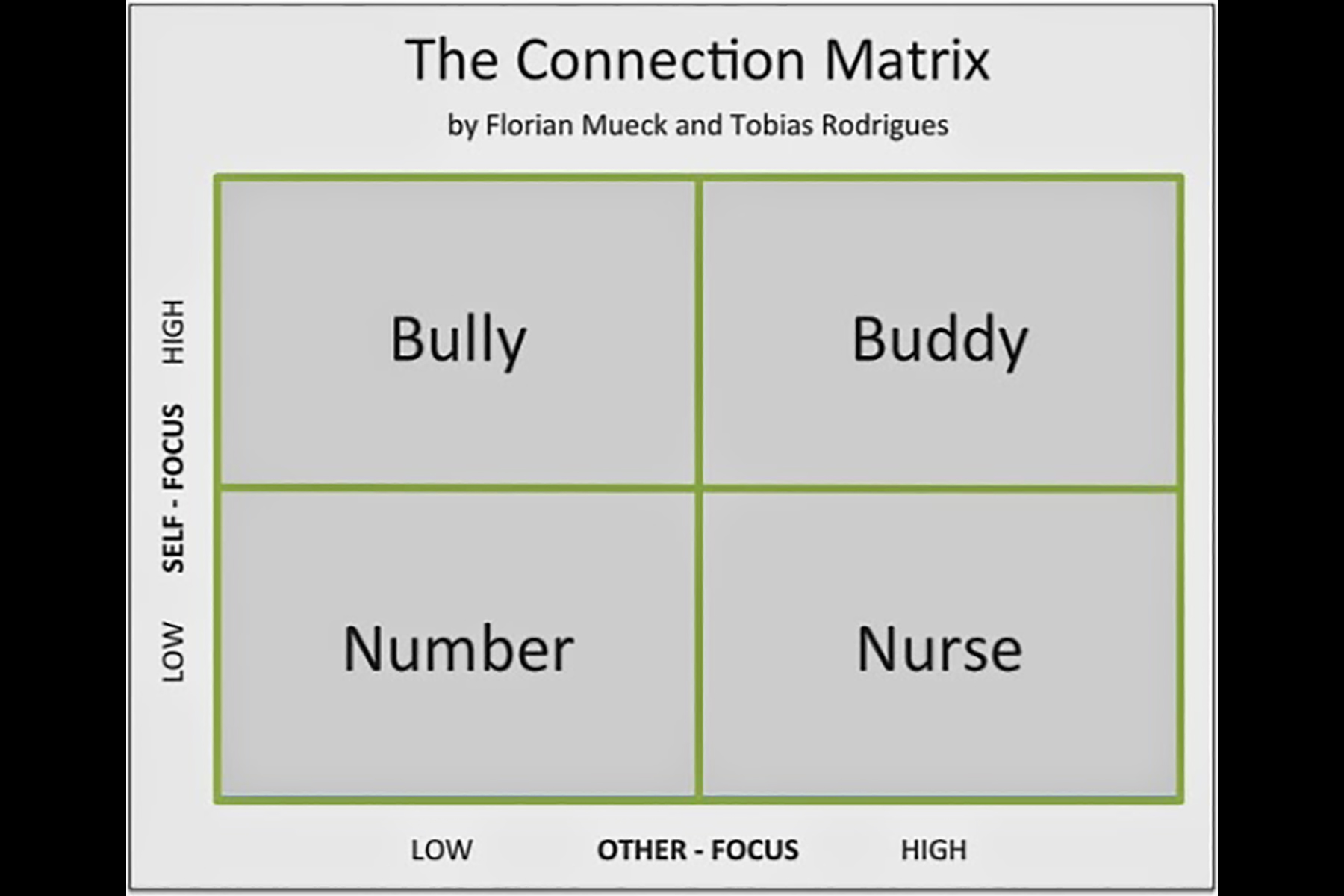
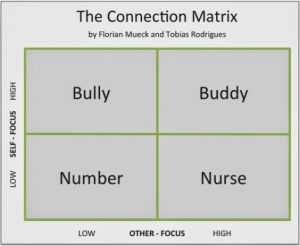
The other day I was sitting on a plane from Warsaw to Barcelona. With me, my friend, speaker and trainer Florian Mueck. We were coming back from a spectacular Spectacular Speaking event.
In her opening speech, the incomparable Olivia Schofield, founder of the Spectacular Speaking series, said: The one thing that takes you from great to spectacular is… connection. Connection. Connection between the speaker and the audience. Connection between oneself and the other.
Florian and I started to philosophize about this subject. We played around with different dimensions and combinations and patterns. We scribbled and painted and drew and scribbled…
In the end, we knew that we wanted to show two dimensions – the self-focus (or speaker focus) and the other-focus (or audience focus). Self/other-focus refers to the degree with which one chooses to be concerned with oneself and with others.
We also knew that we wanted to use the high-low categories. Our big challenge – the four field titles. After three hours we finally felt confident about the names. “The Connection Matrix” was born.
The Connection Matrix shows four different kinds of speakers/communicators. In this first part we’ll look at the status quo of their communication mode.
Number – Low Other/Low Self
Low empathy combined with low self-interest. Numbers drive through life with their handbrake on. They’re the typical business presenters. Not passionate about the data they present, numbers deliver only to deliver. Their voice? Monotonous. Their body language? Closed. Their enthusiasm? Not existent.
They say: But how can I put passion into my monthly business unit report? Numbers never consider a speech or presentation an opportunity. For them, communication is an obligation. Creativity is for artists, they think.
They also think: I do my job. Isn’t that enough? If others don’t like what I say, it’s not my fault. Numbers are brilliant at avoiding responsibility – for themselves and the audience. Like Florian’s mom says: Where there’s no hook, you cannot hang a jacket.
The paradox with numbers is that they don’t count: no one listens, no one remembers, no one cares. Connecting as number, you fail to connect. Number-mode is beneficial only when you wish not to connect. Numbers are the poorest connectors of the four types.
Nurse – High Other/Low Self
High empathy combined with low self-interest. Nurses strive to please their audience. They communicate with the language of “you” and their goal is to promote the audience. A nurse’s communication style consists of satisfying the interests of others.
The paradox with nurses is that by failing to affirm their self-interests, the connection entails no expense and so is undervalued. Because nurses don’t speak up for themselves, audiences don’t really listen, care less and very easily forget.
Connecting as a nurse, you don’t make an impact. Nurse-mode is beneficial when you wish to go unnoticed. If you don’t shift to buddy, your audience will soon take you for granted!
Bully – Low Other/High Self
Low empathy combined with high self-interest. Bullies strive to satisfy their own interests. Bullies communicate with the language of “I” and their style consists of pushing an agenda.
In bully-mode, you believe only you hold the power to make a change. So you feel you have little to learn from your audience. A bully’s preferred strategy is Follow me, now!
The paradox with bullies is that in failing to give the recognition they seek, they struggle all the more to get it from their audience. People listen, they remember, oh! but they don’t care.
Connecting as a bully, you fail to inspire trust. Bully-mode is beneficial when all you want is to stand out from the crowd. If you don’t shift to buddy, your audience will begin to feel betrayed and soon you’ll end up talking to yourself!
Buddy – High Other/High Self
High empathy combined with high self-interest. Buddies strive to develop a whole that is greater than the sum of its parts. Buddies communicate with the language of “we” and their style consists of promoting ways to satisfy self-interests and the interests of others.
In buddy-mode, you believe in a joint potential and so the purpose of communicating is mutual growth. The preferred strategy is How shall we do this? You know you’re listening to a buddy when you’re pushed out of your comfort zone and it feels good!
The paradox with buddy-mode is that when you place the connection at the center, the result is the speaker meets her goals and the audience gets what they came for. Everyone is happy. Audiences remember buddies, they listen to them, and they definitely care.
Connecting as a buddy, you act like a magnet, attracting others to move out their communication mode and to connect as buddies. Buddy is the ultimate mode of connection because everyone grows beyond expectation.
Whether you consider yourself a Number, a Nurse or a Bully, in The Connection Matrix – Part Two we’ll share with you insights on how to become a Buddy, the ultimate connector.
Grandpa Jose’s Effectiveness Recipe

My grandfather was born in the Azores Islands in 1906. His schooling literally lasted two days: the first and the day after. He got punished, didn’t like it, left and never went back.
Grandpa didn’t learn to read or write. Grandpa didn’t really know who Aristotle, Shakespeare or Karl Marx were. Grandpa didn’t rely on business trainings or performance enhancement models. Grandpa was a farmer.
One day, when he was but a young man, his dad gave him and his brother a gift: a pregnant young cow for the two to start their lives as herdsmen. Two years later, his brother owned two head of cattle; grandpa Jose, seven. From then on, his success kept multiplying, considerably.
This afforded him the opportunity to savor life, especially his passion for discovering the wonders of the world. In the end, grandpa grew to be quite the philosopher, readily armed with the precious pearls of common sense and practical wisdom.
The recipe of his effectiveness? He used say he remembered that often at the end of the day while he sat by the sunset reflecting, he’d notice his brother in the distance, still tilling the earth, persistently putting his back into every strike.
“Before the sun rose,” he used to say, “John would already be out on the field. And not before dark would he return! — All hard work and diligence. I did it differently. Every morning I’d ask myself: ‘What do I have planned for the day?’” Then he’d think:
How can I accomplish twice as much with half the effort?
Grandpa kept at it until he found an answer. Most of them eventually worked.
I gather an important lesson from my grandfather: To make it an undying habit to stop, rethink and improve. I’m sure he would be happy to know that Aristotle thought along similar lines: “We are what we repeatedly do. Excellence, therefore, is not an act but a habit.”
I must confess, though, I sometimes recognize a bit of great-uncle John in me. What about you: with whom do you most identify with?
Rage Against The Dying Of The Light
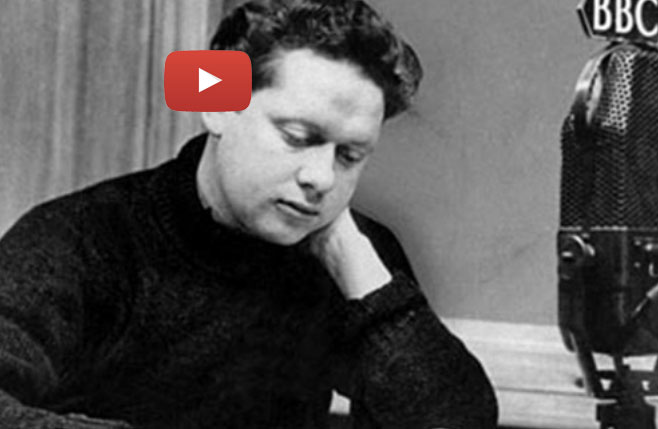
In this poem “Do Not Go Gentle Into That Good Night”, Welsh poet and writer, Dylan Thomas proclaims that the wise and good do not go gently into the good night of death.
Instead, they rage against the dying of the light, against the demise of what wisdom and good their words and deeds may have effected in the world.
Though good and wise leaders must die, as we all,
their light need not follow them into the good night.
It is now our journey to carry on their work and to “rage, rage against the dying of the light.”
Make It Touchable, Belarmino Said

“What motivates people?” – I was asked in a recent interview. The question reminds me of a story back when I worked in prisons. My colleagues and I had been asked to do a mini workshop with the inmates about identity and self-perception.
The key to motivation is to find the right reasons for someone to want to do something.
How on earth were we going to get prisoners engaged in a mandatory session on identity and perception?? I remember we were in the prison’s community area, brainstorming on how we could pull this off, when one of the senior guards said:
“Don’t sweat it. If they don’t want to do something, they won’t. And there’s nothing you can do about it.” His intention wasn’t to discourage us, rather to warn us not to get our hopes up high. It didn’t work – we did get our hopes up!
I remember us thinking: “Okay, so if what this man is saying is true, all we have to do is get the prisoners to want to do the workshop.” We realized that they would do anything we asked them to do, as long as we found a way for them to want to do it.
In fact, this became a guiding principle for our activities during the years we worked with inmates. And we did accomplished some cool stuff, such as plays, holiday parties, gastronomic events, even a meditation retreat!
If you want to motivate someone, make it touchable.
Appeal to their interests, not yours; their values, not yours.
On that particular occasion, we asked an actor friend, Belarmino, to help us. He suggested: “Let’s make it touchable”. So he asked the inmates to take turns in pairs in placing a sheet of tinfoil on each other’s face and to gently mold a mask.
Belarmino asked each one if they recognized themselves in the mask and contrasted their opinion with comments from the group. Et voilà! – thirty inmates having a philosophical conversation about self-perception and identity. Impressive!
We then formed a circle and passed a broomstick around. Everyone pretended it was a different object and the group guessed what it was. This way Belarmino conveyed the idea that when we change our actions, the way others perceive us also changes. Effective and fun!
To this day, when I think of motivation, I remember Belarmino: “Make it touchable!” To make people do things is not to motivate them. That’s to force them. To motivate is to find a way for them to want to do it. And if you can do that… they’ll do anything for you!
Do you know someone who could benefit from Belarmino’s inspiration? Share his story!
The Impact Of Unconventional
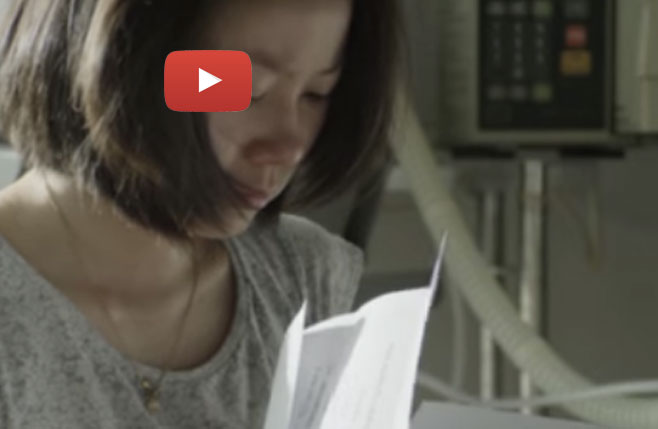
The video above got me thinking about the impact of unconventional gestures of generosity on our lives. If you haven’t seen it, please do so – it’s more important than what you’ll read here.
If traumatic events can stick with us forever, acts of generosity fuel our motivation for a lifetime, especially if they’re unconventional and do not conform to typical conduct.
In the video, no one expects a thief – especially a youngster – to be “rewarded”. What strikes me is not that it‘s extreme, but that it doesn’t follow the usual expected behavior.
The effects of unusual kindness go far beyond feelings of gratitude.
Unconventional generosity is a credible way of saying two vital things: I believe in you, and you are worthy of appreciation. There’s nothing more important to say in life than this.
When it comes to self-confidence and self-acceptance, words only go a certain distance. Sometimes, saying “I believe in you” and “You’re outstanding” isn’t enough. Sometimes, you need to show you believe and appreciate.
Much more than words, actions are credible – you can see them, recall them, hang on to them. They’re the fuel of our motivation.
Being unconventionally good makes a difference.
This also applies to our professional network. Things like putting yourself on the line for someone you don’t really know, giving a compliment just because, stopping to notice when no one else does or giving the new guy a place of honor make a huge difference.
Maybe you won’t see the effects of the good you’ve done. Maybe you won’t get the credit you deserve. Maybe you won’t reap the fruits thirty years later. Maybe.
But people like the man in the video just won’t let you forget that being good is not about good rewards. It’s about better people!
Know that all unconventional generosity has an impressive impact. Trust that it reaches beyond the sense of gratitude out on to the sacred fields of self-confidence and recognition. Follow on. Follow on.
Be unconventionally good! It works.
Do Your Requests Inspire Trust?

Have you noticed how some people tend to always get what they ask for at work: a raise, time off, more time, change in plans, etc.? And what’s more, everyone seems delighted to attend to their requests. What’s their secret?
You might remember when you were little, grownups requesting the magic “P” word when you asked for something: “What do you say?” And then we’d say: “Can I… PLEASE?” Demands and requests were clearly differentiated by the “P” word.
Intended or not, the effects of this practice reach beyond good manners. It taps into how our brains are wired: When a person hears your petition as a request, she feels the power to contribute to your wellbeing. If she willingly does so, she will feel satisfaction.
People who don’t care how their requests are received instill distrust and have a hard time getting what they want.
When a request is heard as a demand, it feels like an imposition. This leads either to rejection or submission, both harboring feelings of resentment, anger or other nasty things that can pop up in the future to bite us.
In a grownups’ world, where roles aren’t always clearly defined, requests and demands can look a lot alike. A simple “please” might no longer do the trick:
“Hey Jeff, I want that budget by the end of the day please.” “Kate, please send me the report now, got it?” Are these requests or demands? What counts is how the person hears your request. It’s what makes the difference to get what you want.
You get what you want when you voice your needs in a way that others hear them as requests, not demands.
Three things you can do to assure your requests are heard as such: Prepare to hear “no”. Ask the person to tell you what she just heard you say. And promise yourself not to engage in persuasion until you’ve understood the person’s explanation.
This has an incredible effect: it shows you care about that person’s needs, not just your request. She will feel this. This generates trust, a new opening to express your request.
It’s funny: you get what you request by being prepared not to get it! Another option is not care, but that brings us to square one: demands. And we know how that ends, right?


